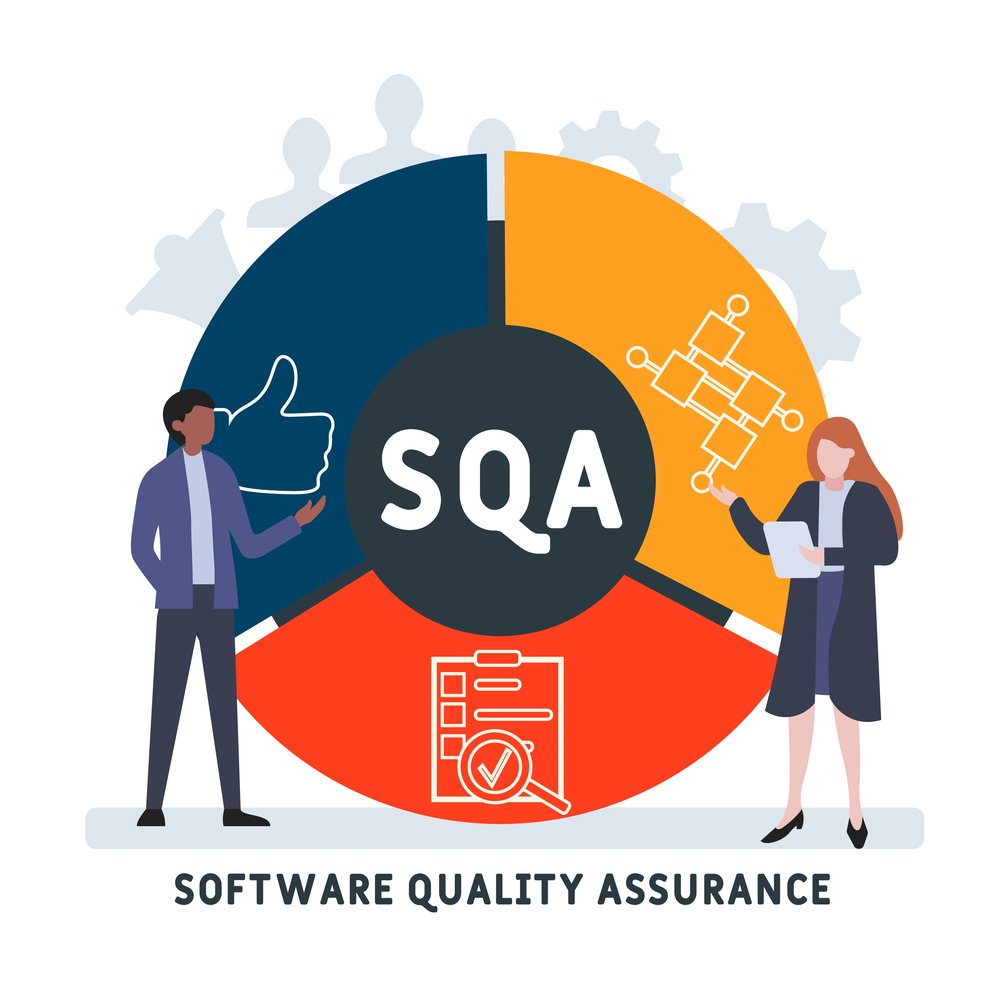
Software Quality Assurance (SQA) is the process of ensuring that the software developed meets the required standards and fulfills the intended purpose. The SQA process includes planning, designing, testing, and correcting software defects.
The goal of SQA is to prevent defects from entering the software, to identify weaknesses as early as possible, and to correct them before they cause problems. SQA also helps to ensure that the software meets customer requirements and is consistent with company standards.
The SQA process should be tailored to the specific software project. It should be based on the project’s risk assessment, which identifies the risks associated with developing and deploying the software. The SQA process should also be based on the company’s quality management system (QMS).
Various Types of SQA
There are different types of SQA. Static testing is a software inspection and analysis method that uses automated static analysis tools to identify defects, including security vulnerabilities and design issues, during the coding phase.
Dynamic testing is a software inspection and analysis method that uses automated dynamic analysis tools or manual testing to find defects during the code execution phase. Examples of dynamic testing include functional and load/stress testing. Many software development companies use a combination of both static and dynamic SQA methods to ensure the highest quality standards.
As a standard practice, each SQA activity should be carried out by an independent party that reports its results to designated individuals, such as the project manager or software architect. This helps to ensure that there is no bias in the results and that the defects are corrected before they cause problems.
Importance of SQA Process
The SQA process is an important part of software development and should be implemented early in the software development life cycle. The goal is to identify and correct defects before they cause problems and to prevent them from being introduced into the software in the first place. SQA is especially important for safety-critical systems, such as aviation or medical devices.
SQA includes planning, designing, testing, and correcting defects in software. The goal of SQA is to prevent defects from entering the software by carrying out testing during each phase of the software development life cycle. The SQA process should also ensure that testing is done independently and objectively.
The following steps are recommended for an effective SQA process:
1. Planning of SQA activities
Planning of SQA activities means defining a plan for quality assurance which specifies the methods, resources, and tools to be used. The SQA plan should be tailored to the specific software project and should be based on the project’s risk assessment.
2. Design of SQA process
Design of the SQA process means designing a framework for quality assurance that defines the standards, methods, and tools to be used in the project. The SQA framework should be based on the company’s quality management system (QMS).
3. Implementation of SQA process
The SQA process is implemented during the software development life cycle. The goal is to identify and correct defects before they cause problems.
4. Verification and validation of SQA process
The verification and validation of the SQA process ensure that the SQA process is effective and meets the project’s requirements.
5. Maintenance of SQA process
The SQA process should be maintained throughout the software development life cycle. This includes updating the SQA plan and framework as needed and tracking the results of SQA activities.
SQA is an important part of software development and should be implemented early in the software development life cycle. The goal is to identify and correct defects before they cause problems and to prevent them from being introduced into the software in the first place. SQA is especially important for safety-critical systems, such as aviation or medical devices.
Ensuring SQA in an Effective Way
One of the first steps to ensure SQA is defining and documenting a QMS. This ensures that all software developed by an organization adheres to common standards, such as those for security and quality. The next step is to create a plan for SQA activities based on the results of risk analysis.
The following methods can be used in SQA:
- Static analysis: Static analysis is the process of inspecting software code for potential defects. It can be done manually or with automated tools.
- Dynamic analysis: Dynamic analysis is the process of testing software code while it is running. This can be done with manual testing or automated tools.
- Black-box testing: Black-box testing is the process of testing software by providing inputs and examining the outputs without knowing how it has been implemented.
- White-box testing: White-box testing is the process of testing software by looking at its code to ensure that it performs as expected.
- Reviews: Reviews are a type of quality assurance activity that involves examining software code and documentation to find defects. They can be done manually or with automated tools.
- Correcting defects: Defects are corrected by repairing the software code, changing the requirements, or documentation.
Correcting defects after the software has been developed requires more effort and cost, so it is better to find defects early in the development process. Don’t feel like doing it yourself? We are here to help. Contact us today, and we will make sure that you don’t have to worry about your SQA.

